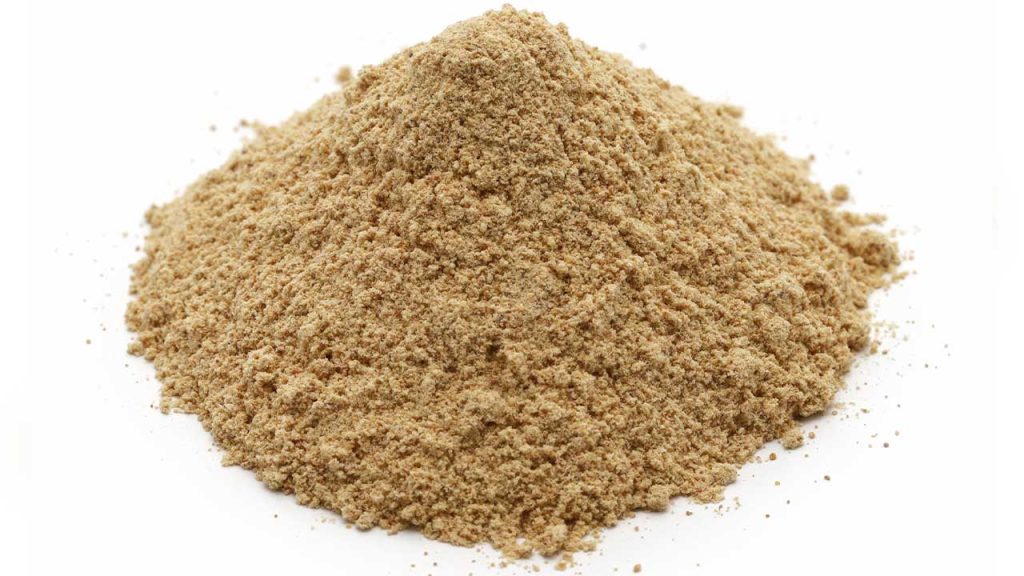How Much Maca Root Per Day? A Friendly Guide to Optimal Dosage

ListedFit is reader-supported. When you buy through links on our site, we may earn a small commission.
Maca root, native to the Andes region of Peru, is a vegetable known for its potential health benefits, including boosting energy and libido. Often referred to as “Peruvian ginseng,” maca has been used for thousands of years as a source of nourishment and for traditional herbal support. The question of how much maca root to consume per day can depend on various factors such as individual health needs and the form in which it is consumed.
Understanding the nutritional profile and benefits of maca root can help guide intake recommendations.
Different types of maca root, such as powders and capsules, may have varying dosages, and scientific research can provide valuable insight for deciding on the appropriate daily amount. Additionally, considering safety precautions and possible side effects is crucial for anyone considering incorporating maca root into their daily routine.
Key Takeaways
- Maca root is known for its potential health benefits, including boosting energy and libido.
- The daily dosage of maca root depends on individual health needs and the form in which it is consumed.
- It is important to consider safety precautions and possible side effects when incorporating maca root into your daily routine.

Table of Contents
What Are The Benefits of Maca Root?
As someone who’s always interested in natural remedies and supplements, I’ve come across maca root quite often. Maca root, or Lepidium meyenii, is a root vegetable native to the Andes region of Peru, which has been used for thousands of years for its various health benefits.
First and foremost, I noticed that many people, including myself, use maca root to support fertility. Maca root may potentially improve both male and female fertility by promoting hormonal balance and increasing libido, making it an appealing option for couples trying to conceive.
Speaking of libido, it’s worth mentioning that maca root has a reputation for enhancing sexual function and desire in both men and women. As someone who values a healthy and satisfying love life, I found that incorporating maca root into my diet led to improved overall feelings of intimacy and connection.
I also really appreciate maca root’s effect on my energy levels. As a busy individual, I need to keep my energy up throughout the day, and maca root has been a fantastic natural solution for me. Those who use maca root often report reduced feelings of fatigue and increased alertness, and I can attest to that.
Alongside the energy boost, I’ve noticed my mood has improved as well. Maca root seems to have the ability to balance hormonal changes and alleviate symptoms related to stress, ultimately leading to a more positive and balanced mood throughout the day. This has been incredibly helpful for me in managing day-to-day stressors, making it easier to stay focused and productive.
In conclusion, for me, incorporating maca root into my daily routine has been a game-changer in terms of supporting my fertility, enhancing sexual function and libido, improving energy levels and mood, and managing stress. I highly recommend giving it a try if you’re looking for a natural, friendly boost in these areas of your life.
Nutritional Profile of Maca

Maca root is a highly nutritious food that’s become quite popular in my health journey. Primarily available in powder form, it’s easy to add to my daily meals and smoothies. I’ve found that maca contains an impressive range of vitamins, minerals, and other essential nutrients.
When I looked up the nutritional content of maca, I discovered that it’s composed of about 61% carbohydrates. These carbs give me a great source of energy to power through my day! Furthermore, maca is also a good source of fiber (9.8%), which supports my digestive system and keeps me feeling fuller for longer.
One of the things that stand out for me about maca is its rich mineral content. It contains 4.9% ash, which represents various essential minerals present in the root. Some important minerals I found in maca are calcium, magnesium, and iron. Calcium has been helpful for maintaining my bone health, while magnesium keeps my muscles functioning smoothly. Iron, on the other hand, supports my energy levels and cognitive function.
Apart from minerals, maca root also offers me a broad spectrum of vitamins, including B1, B2, C, and E. I’ve noticed that incorporating maca into my diet significantly boosts my immune system thanks to these vitamins.
Besides vitamins and minerals, maca is known to contain a variety of amino acids, alkaloids, and proteins. One of the unique components I found in maca is 3.2% fatty acids, which contribute to my body’s overall health and hormonal balance.
As a health enthusiast, I couldn’t be happier with the nutritional profile of maca. This versatile root packs an impressive punch when it comes to nutrients, making it a valuable addition to my diet.
How Many Milligrams of Maca Per Day Should You Take?
As someone who has been taking maca for the past 6 months, I’d like to share my insights on the ideal daily maca dosage. It’s essential to remember that the appropriate maca intake may differ slightly from person to person.
How Much Maca Should a Man Take Daily
For men, maca is often taken to boost energy, libido, and general well-being. Based on my experience and research, In my experience, I found that taking between 1500mg to 3000mg daily sometimes even less, is enough to see a noticeable effect.
This dosage range is often used in human studies and has delivered positive results. Keep in mind that the actual amount of maca per serving will vary by brand, so it’s always a good idea to start with the recommended amount on the package.
How Much Maca Should a Woman Take Daily
Maca can help women by addressing hormonal imbalances, enhancing fertility, and providing relief from menopause symptoms.
I have read different schools of thought on the amount a woman should take but it differs. For instance if you’re just taking it for general health or if a practitioner has prescribed it to you to help you with a specific condition.
A daily dosage of 1500mg to 3000mg works well for many women. I have read in some cases, a slightly adjusted dosage of 2000mg daily can be effective for managing menopause symptoms. I encourage you to look further into the supplement you take and the recommended dosage included.
What Are the Different Types of Maca and their uses?
As I explored Maca roots, I came across various types and forms that are available in the market. Maca root is available in three main colours: yellow maca, red maca, and black maca. Each color has its unique properties and benefits.
Yellow Maca is the most common type, making up about 60% of the annual harvest in Peru. It’s moderately sweet in flavor and is a good source of nutrients. Yellow maca is typically used for general health benefits, such as improving energy levels and overall wellness.
Red Maca accounts for about 25% of the annual harvest and is known for its sweeter taste and higher phytochemical levels. It is particularly beneficial for women as it has hormonal balancing effects and supports bone health.
Black Maca, on the other hand, is the rarest type but has been linked to improved memory, alertness, and male fertility. It’s also known for its slightly bitter taste.
Maca products come in various forms, like:
- Powder: This is the most common way to consume maca. It can be added to smoothies, juices, or even baked goods. When using maca powder, the dosage generally ranges between 1500 mg to 3000 mg daily, taken with food.
- Capsule: These are convenient for those who prefer taking supplements in pill form. The dosage depends on the brand and concentration of maca in each capsule.
- Gelatinized Maca: This form is created by removing the starch content through a heating process. It is more concentrated and easier to digest than raw maca powder. It’s great for people with sensitive stomachs.
- Maca Extracts: These are liquid tinctures or concentrated extracts that can be easily added to water or juice. They are highly potent and require a smaller amount for the desired effects.
In conclusion, it’s essential to choose the right type of maca and form for your needs. Remember to start with the recommended dosage and consult a healthcare professional if needed. With an understanding of different types of maca and their uses, I hope you can make an informed decision when incorporating maca products into your daily routine.
What’s The Scientific Research on Maca Root?
I’ve been looking into the research on maca root, and I must say, it’s fascinating. There have been numerous human and animal studies conducted by scientists, and I’d like to share some of their findings with you.
In one study, researchers looked at the effect of maca root on sperm motility. After 12 weeks of treatment with maca root extract, the male participants experienced a significant increase in sperm motility, which could improve their chances of conceiving a child.
Another interesting area of research involves maca’s potential benefits for mood and mental well-being. Some studies have shown that maca might help alleviate symptoms of anxiety and depression in certain populations. This could be due to the bioactive compounds found in the maca root.
When it comes to maca dosage, studies have varied in their recommendations. Some human studies have used doses ranging from 1,500 mg to 3,000 mg taken daily with food, while others have suggested a 10-15 g/day dose for powdered maca. It’s important to follow the suggested dosage on the product you choose, as the amount of maca in each serving may differ between brands.
It’s worth noting that in some of these studies, maca root was compared to a placebo. This helps researchers determine whether the observed effects are genuinely due to the maca root or simply because of the “placebo effect”—the phenomenon where people experience improvements because they believe they are receiving a beneficial treatment, even if they’re not.
So, based on the research I’ve encountered, it seems like there might be some solid evidence behind the potential benefits of maca root. Of course, it’s always best to consult with a healthcare professional before starting any new supplement regimen.
I hope you found this information about maca root research useful!
Safety and Possible Side Effects of Maca Root

As a popular herbal supplement, maca root is generally considered safe for most people. However, it’s important to keep in mind that, like with any supplement, there could be possible side effects and risks.
For women, it’s important to know that maca root might affect hormone levels. If you’re pregnant or breastfeeding, it’s advised to avoid consuming maca root, as its safety during these times is not well-established.
Similarly, women who are dealing with menopause or menstrual cycles might experience changes due to maca root’s potential impact on hormone levels. As such, women with hormone-sensitive conditions, such as ovarian cancer, fibroids, or uterine fibroids, should be particularly cautious when it comes to including maca root in their diet.
Side effects of maca root are not extremely common, but some people have reported experiencing moodiness, cramping, stomach distress, and insomnia. It might also increase the risk of certain hormone-sensitive diseases. Although these side effects are considered rare, if you do experience any adverse reactions, it’s best to stop consuming maca root and speak with your healthcare provider.
In conclusion, while maca root has numerous potential benefits, it’s important to be aware of possible side effects and risks, especially for women with hormone-sensitive conditions. As always, speak with your healthcare provider before adding maca root to your daily routine, and be mindful of any changes in your health.
Frequently Asked Questions
What are the benefits and side effects of maca root for women?
Maca root can offer women a variety of health benefits, including increased energy, improved hormonal balance, enhanced fertility, and reduced menopause symptoms.
But some side effects for women may include changes in menstrual cycle and possible interactions with hormone replacement therapy.
As always, it’s essential to consult with a healthcare professional before starting maca root supplementation.
How does maca root intake differ for men and women?
Although maca root can provide benefits to both men and women, the specific effects may differ.
For women, maca root is often used to alleviate menopause symptoms and balance hormones.
For men, it has been claimed that maca root can help improve sperm production, stamina, and libido.
Can maca root help with ED?
Maca root has been used traditionally to boost libido and sexual function in both men and women.
Some studies suggest that it may have a positive effect on erectile dysfunction.
However, more research is needed to conclusively determine its effectiveness in treating this condition.
What is the difference between black maca and regular maca?
Black maca is a specific type of maca root, distinguished by its darker color.
Some studies suggest that black maca may have unique benefits compared to other maca varieties, such as increased energy, improved memory, and enhanced male fertility.
However, more research is needed to confirm these findings and understand the differences between black maca and other types.
Is there a risk of taking too much maca root?
While maca root is considered safe for most individuals when taken in the suggested dosage, excessive intake can lead to potential side effects such as digestive issues, changes in hormone levels, and interactions with medications, particularly hormone replacement therapy.
To minimize risks, it’s essential to follow the recommended daily dosage on the supplement you take, and if you notice anything negative, stop immediately.
Author
-
Stuart Patrick is a health and fitness lifestyle journalist who writes for ListedFit.com.
“I've spent a lot of time trying to get in shape and change my body and I realised there are so many untruths in the health and fitness industry that can slow down or stop your progress, so I share my knowledge and experience to help others to cut through the BS.”
Latest entries
 NutritionJune 5, 2024Shilajit Products
NutritionJune 5, 2024Shilajit Products FitnessMay 14, 2024Donate Blood
FitnessMay 14, 2024Donate Blood GearApril 6, 2024HOKA Kawana 2 Review – Are These The Best HOKA Gym Shoes?
GearApril 6, 2024HOKA Kawana 2 Review – Are These The Best HOKA Gym Shoes? CrossFitApril 4, 2024How Many Pull-Ups Should I Do Daily? Let’s Figure it Out…
CrossFitApril 4, 2024How Many Pull-Ups Should I Do Daily? Let’s Figure it Out…
Affiliates:
This post may contain affiliate links that at no additional cost to you, the site may earn a small commission. We only recommend products we would use ourselves and all opinions expressed on this site are our own.
General Advice:
The information provided in this article is for general informational purposes only. It is not intended as a substitute for professional advice. Always consult with a qualified healthcare professional before starting any new diet, exercise program, or making changes to your health routine.
Accuracy Advice:
While we strive to provide up-to-date and accurate information, the content in this article may not reflect the most current research or medical guidelines. We encourage readers to do further research and consult with professionals for more personalized advice.
Our Recommendations:
The products and services mentioned in any of our articles are recommended based on our independent research and personal experience. We are not sponsored by any company. We aim to suggest products and services we believe are of high quality and could be beneficial to our readers.






